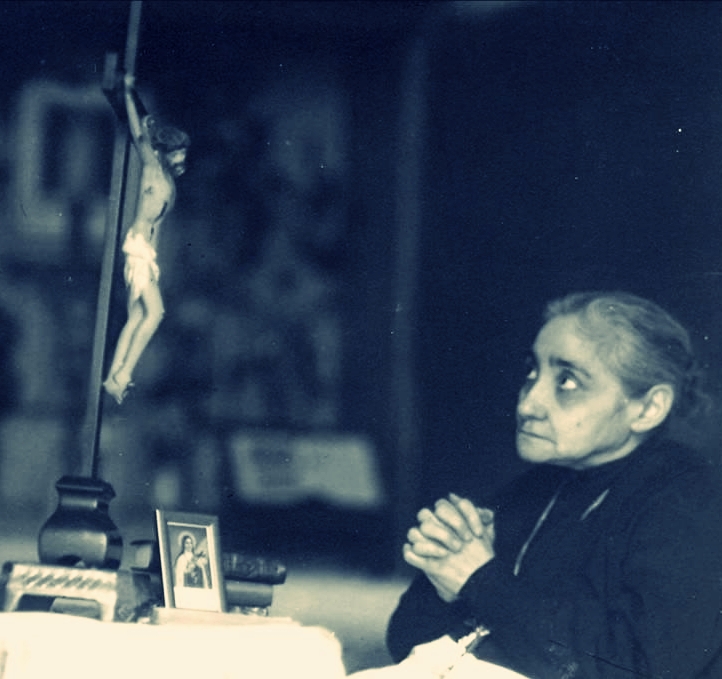
First published January 7th, 2020:
IT’S time to address some of the emails and messages questioning the orthodoxy of the writings of Servant of God Luisa Piccarreta. Some of you have said that your priests have gone so far as to declare her a heretic. It’s perhaps necessary, then, to restore your confidence in Luisa’s writings which, I assure you, are approved by the Church.
WHO IS LUISA?
Luisa was born on April 23rd, 1865 (a Sunday which St. John Paul II later declared as the Feast Day of Divine Mercy Sunday, according to the Lord’s request in the writings of St. Faustina). She was one of five daughters who lived in the small city of Corato, Italy. [1]Biographical history drawn from Divine Will Prayer Book by theologian Rev. Joseph Iannuzzi, pp. 700-721
From her earliest years, Luisa was afflicted by the devil who appeared to her in frightful dreams. As a result, she spent long hours praying the Rosary and invoking the protection 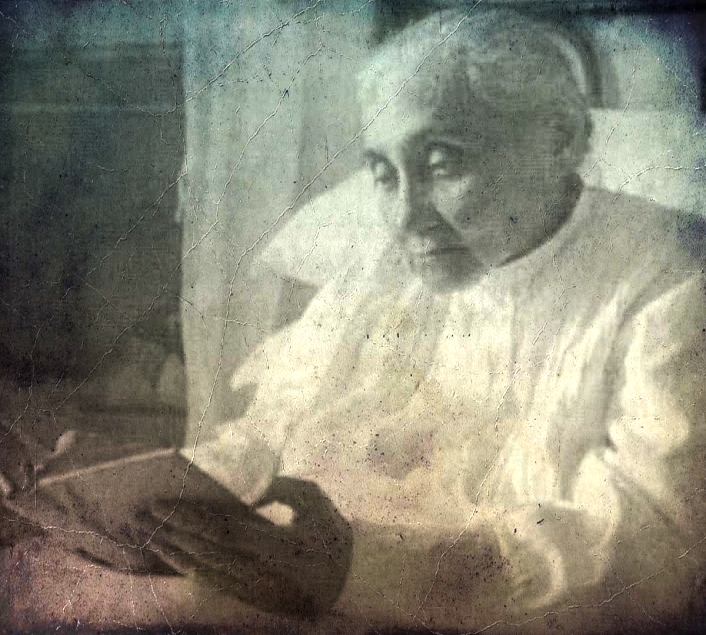 of the saints. It wasn’t until she became a “Daughter of Mary” that the nightmares finally ceased at the age of eleven. In the following year, Jesus began to speak interiorly to her especially after receiving Holy Communion. When she was thirteen, He appeared to her in a vision that she witnessed from the balcony of her home. There, in the street below, she saw a crowd and armed soldiers leading three prisoners; she recognized Jesus as one of them. When He arrived beneath her balcony, He raised his head and cried out: “Soul, help Me!” Deeply moved, Luisa offered herself from that day on as a victim soul in expiation for the sins of mankind.
of the saints. It wasn’t until she became a “Daughter of Mary” that the nightmares finally ceased at the age of eleven. In the following year, Jesus began to speak interiorly to her especially after receiving Holy Communion. When she was thirteen, He appeared to her in a vision that she witnessed from the balcony of her home. There, in the street below, she saw a crowd and armed soldiers leading three prisoners; she recognized Jesus as one of them. When He arrived beneath her balcony, He raised his head and cried out: “Soul, help Me!” Deeply moved, Luisa offered herself from that day on as a victim soul in expiation for the sins of mankind.
Around the age of fourteen, Luisa began to experience visions and apparitions of Jesus and Mary along with physical sufferings. On one occasion, Jesus placed the crown of thorns upon her head causing her to lose consciousness and the ability to eat for two or three days. That developed into the mystical phenomenon whereby Luisa began to live on the Eucharist alone as her “daily bread.” Whenever she was forced under obedience by her confessor to eat, she was never able to digest the food, which came out minutes later, intact and fresh, as if it had never been eaten.
On account of her embarrassment before her family, who did not understand the cause of her sufferings, Luisa asked the Lord to conceal these trials from others. Jesus immediately granted her request by allowing her body to assume an immobile, rigid-like state that appeared almost as if she were dead. It was only when a priest made the sign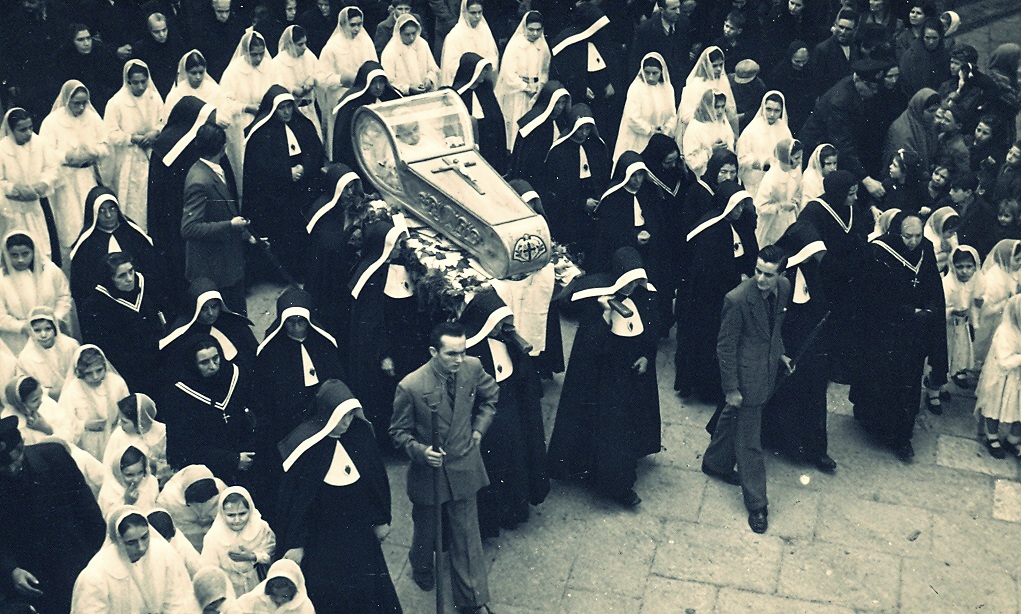 of the Cross over her body that Luisa regained her faculties. This remarkable mystical state persisted until her death in 1947—followed by a funeral that was no little affair. During that period in her life, she suffered no physical illness (until she succumbed to pneumonia at the end) and she never experienced bedsores, despite being confined to her little bed for sixty-four years.
of the Cross over her body that Luisa regained her faculties. This remarkable mystical state persisted until her death in 1947—followed by a funeral that was no little affair. During that period in her life, she suffered no physical illness (until she succumbed to pneumonia at the end) and she never experienced bedsores, despite being confined to her little bed for sixty-four years.
THE WRITINGS
During those times when she was not in ecstasy, Luisa would write down what Jesus or Our Lady dictated to her. Those revelations comprise two smaller works called The Blessed Virgin Mary in the Kingdom of the Divine Will and The Hours of the Passion, as well as 36 volumes on the three Fiats in salvation history.[2]The first group of 12 volumes address the Fiat of Redemption, the second 12 the Fiat of Creation, and the third group the Fiat of Sanctification. On August 31, 1938, specific editions of the two smaller works and another of Luisa’s volumes were placed on the Church’s Index of Prohibited Books beside those of Faustina Kowalksa and Antonia Rosmini—all of which were eventually rehabilitated by the Church. Today, those works of Luisa now bear the Nihil Obstat and Imprimatur and, in fact, the “condemned” editions are not even available or in print anymore, and haven’t been for a long time. Theologian Stephen Patton notes,
Every book of Luisa’s writings that is currently in print, at least in English and by the Center for the Divine Will, has been translated only from versions fully approved by the Church. —”What the Catholic Church says about Luisa Piccarreta”, luisapiccarreta.co
Thus, in 1994, when Cardinal Ratzinger formally nullified the previous condemnations of Luisa’s writings, any Catholic in the world was free to licitly read, distribute, and quote them.
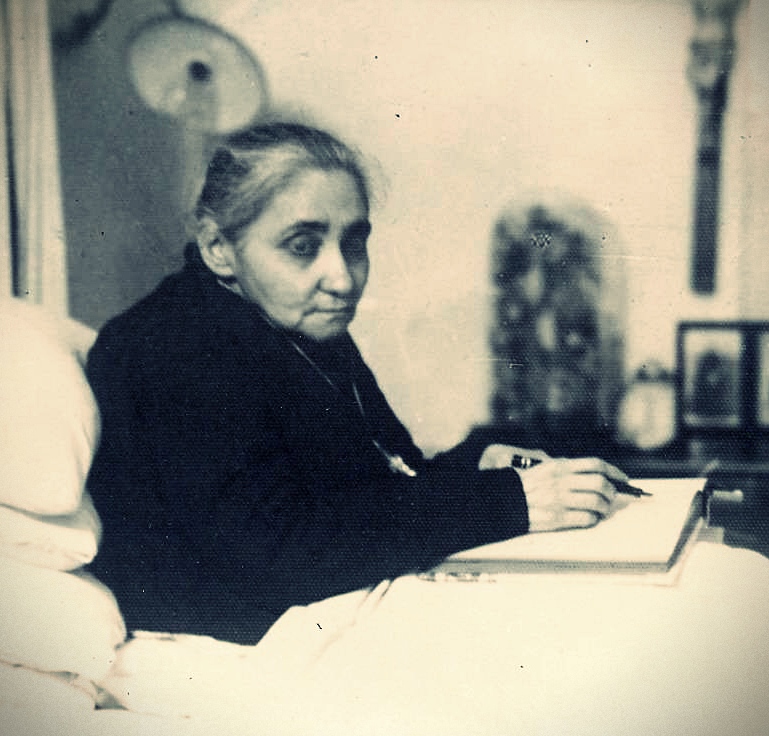 The former Archbishop of Trani, under whom discernment of the writings of Luisa falls, clearly stated in his 2012 Communication that Luisa’s writings are not heterodox:
The former Archbishop of Trani, under whom discernment of the writings of Luisa falls, clearly stated in his 2012 Communication that Luisa’s writings are not heterodox:
I wish to address all those who claim that these writings contain doctrinal errors. This, to date, has never been endorsed by any pronouncement by the Holy See, nor personally by myself… these persons cause scandal to the faithful who are spiritually nourished by said writings, originating also suspicion of those of us who are zealous in the pursuit of the Cause. —Archbishop Giovanni Battista Pichierri, November 12th, 2012; danieloconnor.files.wordpress.com
In fact, Luisa’s writings—short of a declaration by the Congregation for the Doctrine of the Faith—have as solid an approval as one could hope for. The following is a timeline of recent developments in both Servant of God Luisa Piccarreta’s Cause for Beatification as well as the developments on her writings (the following is drawn from Daniel O’Connor’s The Crown of Sanctity — On the Revelations of Jesus to Luisa Piccarreta):
● November 20th, 1994: Cardinal Joseph Ratzinger nullifies the previous condemnations of Luisa’s writings, allowing Archbishop Carmelo Cassati to formally open Luisa’s cause.
● February 2nd, 1996: Pope St. John Paul II permits the copying of Luisa’s original volumes, which up until then had been strictly reserved in the Vatican Archives.
● October 7th, 1997: Pope St. John Paul II beatifies Hannibal Di Francia (Luisa’s spiritual director and devoted promoter and censor of Luisa’s revelations)
● June 2nd & December 18th, 1997: Rev Antonio Resta and Rev. Cosimo Reho—two Church appointed theologians—submit their evaluations of Luisa’s writings to the Diocesan tribunal, affirming nothing contrary to Catholic Faith or Morals is contained therein.
● December 15th, 2001: with the permission of the diocese, a primary school is opened in Corato named after, and dedicated to, Luisa.
● May 16th, 2004: Pope St. John Paul II canonizes Hannibal Di Francia.
● October 29th, 2005, the diocesan tribunal and the Archbishop of Trani, Giovanni Battista Pichierri, render a positive judgment on Luisa after carefully examining all of her writings and testimony on her heroic virtue.
● July 24th, 2010, both Theological Censors (whose identities are secret) appointed by the Holy See give their approval to Luisa’s writings, asserting that nothing contained therein is opposed to Faith or Morals (in addition to the 1997 Diocesan theologians’ approval).
● April 12th, 2011, His Excellency Bishop Luigi Negri officially approves the Benedictine Daughters of the Divine Will.
● November 1st, 2012, the Archbishop of Trani writes a formal notice containing a rebuke of those who ‘claim [Luisa’s] writings contain doctrinal errors,’ stating that such people scandalize the faithful and preempt judgment reserved to the Holy See. This notice, furthermore, encourages the spread of the knowledge of Luisa and her writings.
● November 22nd, 2012, the faculty of the Pontifical Gregorian University in Rome who reviewed Fr. Joseph Iannuzzi’s Doctoral Dissertation defending and explaining  Luisa’s revelations [in the context of Sacred Tradition] give it unanimous approval, thereby granting its contents ecclesiastical approval authorized by the Holy See.
Luisa’s revelations [in the context of Sacred Tradition] give it unanimous approval, thereby granting its contents ecclesiastical approval authorized by the Holy See.
● 2013, the Imprimatur is granted to Stephen Patton’s book, A Guide to the Book of Heaven, which defends and promotes Luisa’s revelations.
● 2013-14, Fr. Iannuzzi’s dissertation received the accolades of almost fifty Catholic Bishops, including Cardinal Tagle.
● 2014: Fr Edward O’Connor, theologian and long-time professor of theology at Notre Dame University, publishes his book: Living in the Divine Will: the Grace of Luisa Piccarreta, strongly endorsing her revelations.
● April 2015: Maria Margarita Chavez reveals that she was miraculously healed through the intercession of Luisa eight years earlier. The Bishop of Miami (where the healing took place) responds by approving investigation into its miraculous nature.
● April 27th, 2015, the Archbishop of Trani writes that “the Cause of Beatification is proceeding positively… I have recommended to all that they deepen the life and the teachings of the Servant of God Luisa Piccarreta…”
● January 2016, Sun of My Will, the official biography of Luisa Piccarreta, is published by the Vatican’s own official publishing house (Libraria Editrice Vaticana). Authored by Maria Rosario Del Genio, it contains a preface by Cardinal Jose Saraiva Martins, Prefect Emeritus of the Congregation for the Causes of Saints, strongly endorsing Luisa and her revelations from Jesus.
● November 2016, the Vatican publishes the Dictionary of Mysticism, a 2,246-page volume edited by Fr. Luiggi Borriello, an Italian Carmelite, professor of theology in Rome, and “consultant to several Vatican congregations.” Luisa was given her own entry in this authoritative document.
● June 2017: The newly appointed Postulator for Luisa’s cause, Monsignor Paolo Rizzi, writes: “I appreciated the work [carried out thus far]… all this constitutes a solid base as a strong guarantee for a positive outcome… the Cause is now at a decisive stage along the path.”
● November 2018: An official Diocesan inquiry is initiated by Bishop Marchiori in Brazil into a miraculous healing of Laudir Floriano Waloski, thanks to Luisa’s intercession.
RIGHTS… AND WRONGS
Without question, Luisa has approval from every direction—save for those critics who are either unaware of what the Church says, or ignore it. However, there exists some genuine confusion as to what can and cannot be published at this time. As you’ll see, it has nothing to do with reservations over Luisa’s theology.
In 2012, Archbishop Giovanni Picherri of Trani stated:
…it is my desire, after having heard the opinion of the Congregation for the Causes of Saints, to present a typical and critical edition of the writings in order to provide the faithful with a trustworthy text of the writings of Luisa Piccarreta. So I repeat, the said writings are exclusively the property of the Archdiocese. (Letter to Bishops of October 14, 2006)
However, in late 2019, the Publishing House Gamba issued a statement on their website regarding the already 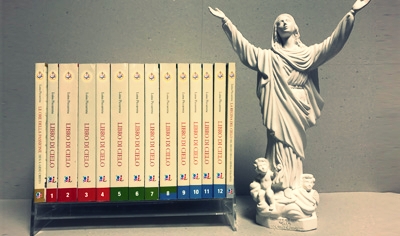 published volumes of Luisa’s writings:
published volumes of Luisa’s writings:
We declare that the content of the 36 books is perfectly in line with the original Writings by Luisa Piccarreta, and thanks to the philological method used in its transcription and interpretation, it is to be considered a Typical and Critical Edition.
The Publishing House grants that the editing of the complete Work is faithful to the one made in the year 2000 by Andrea Magnifico – founder of the Association of the Divine Will in Sesto S. Giovanni (Milan) and holder of the right of ownership of all the Writings by Luisa Piccarreta – whose last will, handwritten, was that the Publishing House Gamba should be the House entitled “to publish and more widely diffuse the Writings by Luisa Piccarreta”. Such titles were directly inherited by sisters Taratini from Corato, Luisa’s heirs, on September 30th 1972.
Only the Publishing House Gamba is authorized to publish the Books containing the Original Writings by Luisa Piccarreta, without modifying or interpreting their contents, because only the Church can evaluate them or give explanations. —from Association of the Divine Will
It is not entirely clear, then, how the Archdiocese has asserted property rights over Luisa’s apparent heirs who claim the right (by civil law) to publish her volumes. What the Church has full rights over, of course, is the theological evaluation of the orthodoxy of Luisa’s writings and where they can be quoted (ie. in a formal ecclesial setting or not). In that regard, the need for a trustworthy edition is imperative, and arguably, already exists (according to Publishing House Gamba). Also, in 1926, the first 19 volumes of Luisa’s spiritual diary were published with the Imprimatur of Archbishop Joseph Leo and the Nihil Obstat of St. Hannibal Di Francia, the officially appointed censor of her writings.[3]cf. luisapiccarreta.co
Fr. Seraphim Michalenko, vice-postulator for St. Faustina’s canonization, explained to me that, had he not intervened to clarify a bad translation of St. Faustina’s works, they might have remained condemned.[4]The Sacred Congregation for the Doctrine of the Faith, in 1978, withdrew the censures and reservations advanced earlier by the Holy See’s “Notification” in relation to the writings of Sister Faustina. So the Archbishop of Trani has been rightly concerned that nothing interfere with the Cause that has been opened for Luisa, such as bad translations or erroneous interpretations. In a letter in 2012, he stated:
I must mention the growing and unchecked flood of transcriptions, translations and publications both through print and the internet. At any rate, “seeing the delicacy of the current phase of the proceedings, any and every publication of the writings is absolutely forbidden at this time. Anyone who acts against this is disobedient and greatly harms the cause of the Servant of God” (Communication of May 30, 2008). All effort must be invested in avoiding all “leaks” of publications of any kind. —Archbishop Giovanni Battista Pichierri, November 12th, 2012; danieloconnor.files.wordpress.com
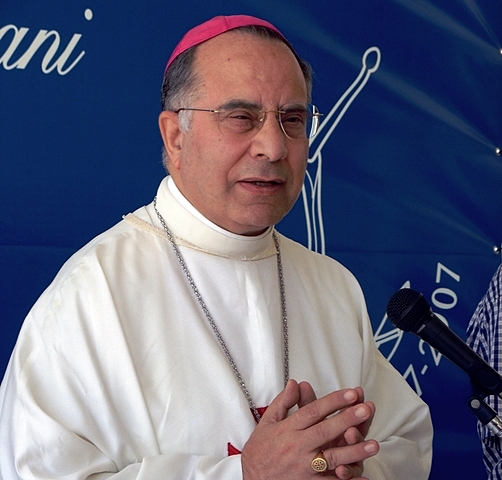 “received with joy the commitment that the participants declared solemnly they would take upon themselves to be more faithful to the Charism of ‘living in the Divine Will'” and that he “recommended to all that they deepen the life and the teachings of the Servant of God Luisa Piccarreta in light of Holy Scripture, the Tradition, and of the Magisterium of the Church under the guidance and in obedience to their Bishops and priests” and that Bishops ought to “welcome and support such groups, assisting them to put into practice concretely the spirituality of the Divine Will.”[5]cf. letter
“received with joy the commitment that the participants declared solemnly they would take upon themselves to be more faithful to the Charism of ‘living in the Divine Will'” and that he “recommended to all that they deepen the life and the teachings of the Servant of God Luisa Piccarreta in light of Holy Scripture, the Tradition, and of the Magisterium of the Church under the guidance and in obedience to their Bishops and priests” and that Bishops ought to “welcome and support such groups, assisting them to put into practice concretely the spirituality of the Divine Will.”[5]cf. letter
WISDOM AND UNDERSTANDING
I had a good chuckle when Daniel O’Connor took to the podium recently at a Divine Will conference where we spoke in Texas. He offered anyone $500 if they could provide evidence of any Church mystic who has been 1) declared a Servant of God, 2) borne such mystical phenomena, and 3) whose writings had such extensive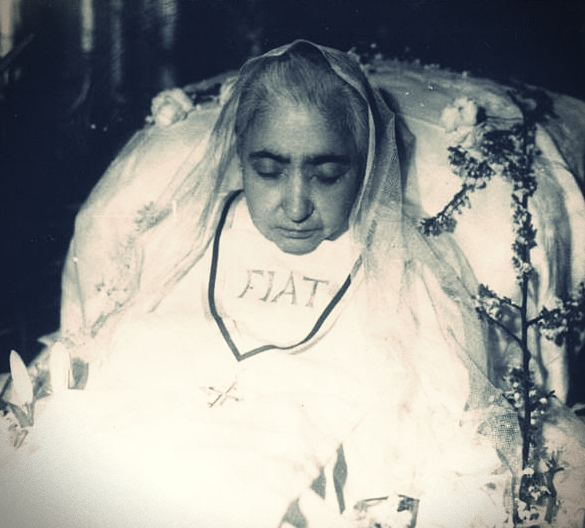 approval, as Luisa Piccarreta does, and yet, 4) was later declared “false” by the Church. The room fell silent—and Daniel kept his $500. That’s because no such example exists. Those who declare this victim soul and her writings to constitute heresy are, I hope, speaking in ignorance. For they are simply wrong and in contradiction with the ecclesiastical authorities in this regard.
approval, as Luisa Piccarreta does, and yet, 4) was later declared “false” by the Church. The room fell silent—and Daniel kept his $500. That’s because no such example exists. Those who declare this victim soul and her writings to constitute heresy are, I hope, speaking in ignorance. For they are simply wrong and in contradiction with the ecclesiastical authorities in this regard.
Aside from the authors already mentioned above, I would highly recommend that skeptics begin with a work such as The Crown of Sanctity — On the Revelations of Jesus to Luisa Piccarreta by Daniel O’Connor, which can be downloaded for free on Kindle or in PDF form at this link. In his usual accessible but theologically sound reasoning, Daniel provides a broad introduction to Luisa’s writings and the coming Era of Peace, as understood in Sacred Tradition, and reflected in the writings of other 20th century mystics.
I also highly recommend the works of Rev. Joseph Iannuzzi Ph.B., STB, M. Div., STL, STD, whose theology has guided and continues to guide my own writings on these subjects. The Splendor of Creation is an acclaimed theological work that beautifully summarizes the Gift of Living in the Divine Will and its future triumph and fulfillment foreshadowed by the Early Church Fathers. Many also enjoy the podcasts of Fr. Robert Young O.F.M. which you can listen to here. The great lay Bible scholar, Frances Hogan, is also posting audio commentaries on the writings of Luisa here.
For those who wish to delve into a deeper theological analysis, read The Gift of Living in the Divine Will in the Writings of Luisa Piccarreta—An Inquiry into the Early Ecumenical Councils, and into Patristic, Scholastic and Contemporary Theology. This doctoral dissertation of Rev. Iannuzzi’s bears the seals of approval of the Pontifical Gregorian University and explicates how Luisa’s writings are nothing less than a deeper unfolding of what has already been revealed in the Public Revelation of Jesus Christ and the “deposit of faith.”
…no new public revelation is to be expected before the glorious manifestation of our Lord Jesus Christ. Yet even if Revelation is already complete, it has not been made completely explicit; it remains for Christian faith gradually to grasp its full significance over the course of the centuries. —Catechism of the Catholic Church, n. 66
Decades ago, when I first read the works of St. Louis de Montfort on the Blessed Virgin Mary, I used to underline certain passages while murmuring to myself, “That’s a heresy… there’s an error… and that’s got to be a heresy.” However, after forming myself in the Church’s teaching on Our Lady, those passages make perfect theological sense to me today. I now see some well-known Catholic apologists making the same mistake with Luisa’s writings.
In other words, if the Church declares a certain teaching or private revelation to be true that we, in turn, struggle to comprehend at the time, our response should be that of Our Lady and St. Joseph:
And they did not understand the saying which [Jesus] spoke to them… and his mother kept all these things in her heart. (Luke 2:50-51)
In that kind of humility, we create the space for Wisdom and Understanding to bring us to true Knowledge—that truth which sets us free. And Luisa’s writings carry that Word which promises to set all of creation free…[6]cf. Rom 8:21
Who could ever destroy the truth — that Father [St.] Di Francia has been the pioneer in making known the Kingdom of My Will — and that only death kept him from bringing the publication to completion? Indeed, when this great work becomes known, his name and his memory will be full of glory and splendor, and he will be recognized as the prime mover in this work, which is so great in Heaven and on earth. Indeed, why is there a battle going on? And why is almost everyone yearning for victory — the victory of holding back the writings on My Divine Fiat? —Jesus to Luisa, “Nine Choirs of the Children of the Divine Will”, from newsletter of the Center for the Divine Will (January 2020)
RELATED READING
The Coming New and Divine Holiness
Listen on the following:
Follow Mark and the daily “signs of the times” here:
To journey with Mark in The Now Word,
click on the banner below to subscribe.
Your email will not be shared with anyone.
Footnotes
| ↑1 | Biographical history drawn from Divine Will Prayer Book by theologian Rev. Joseph Iannuzzi, pp. 700-721 |
|---|---|
| ↑2 | The first group of 12 volumes address the Fiat of Redemption, the second 12 the Fiat of Creation, and the third group the Fiat of Sanctification. |
| ↑3 | cf. luisapiccarreta.co |
| ↑4 | The Sacred Congregation for the Doctrine of the Faith, in 1978, withdrew the censures and reservations advanced earlier by the Holy See’s “Notification” in relation to the writings of Sister Faustina. |
| ↑5 | cf. letter |
| ↑6 | cf. Rom 8:21 |




